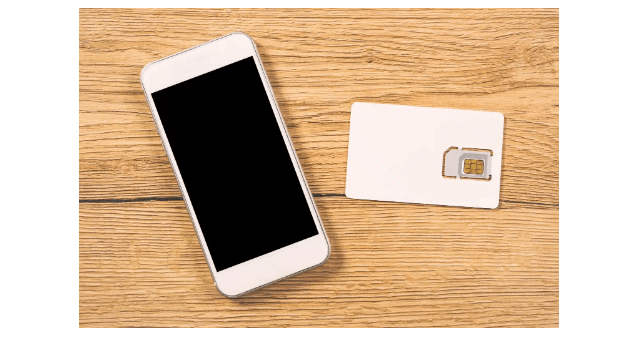International Mobile Subscriber Identity (IMSI): What is it and How Safe is it?

Subscriber identity modules, commonly known as SIM cards, hold significant information about your phone and mobile plan. They allow you to switch phones easily and quickly. The IMSI, or international mobile subscriber identity, is one of the most critical pieces of information stored on your SIM card.
While the IMSI may not be important to cell phone users, it is critical for mobile service providers. The IMSI helps providers identify and locate subscribers, and enables phones to connect to the correct network in different locations. It facilitates seamless communication and reliable connectivity while on the move.
Understanding the International Mobile Subscriber Identity (IMSI)

The international mobile subscriber identity, or IMSI, is a unique identifier stored in the SIM card. This identifier is not publicly disclosed, but users can find their IMSI number on the SIM card packet when they buy a new SIM card.
Typically, the IMSI consists of a 15-digit number, although it may be shorter in some countries. The number is automatically generated and divided into two parts. The first part identifies the Global System for Mobile Communication (GSM) network operator in a specific country, while the second part is generated by the network operator to identify the subscriber. By using the IMSI, mobile service providers can identify and locate subscribers, and enable phones to connect to the correct network in different locations.
In North America, the first part is made up of six digits, while in Europe, the standard is only five digits. A North American IMSI is made up of the following information:
Mobile Country Code (MCC) – three digits
Mobile Network Code (MNC) – two digits
Subscriber Identification Number (SIN or MSIN)
For example, an AT&T IMSI from America might look like this: 310410987654321. The 310 refers to the country code of the United States, 410 for AT&T, or the network code. The remaining number is the subscriber identification number.
What is an IMSI used for?
The international Mobile Subscriber Identity number is used by the cellular network to identify a specific line of service that your data plan is attached to. It’s what is used when you need to establish a connection, whether you are at home or on vacation abroad.
The IMSI defines what network your phone is a part of and what network it can use. Although the IMSI is attached to a specific mobile network operator, or MNO, it can still allow a phone to connect to other networks, depending on the agreements between the MNO and other providers.
However, if you go outside of your network, your phone will look for a roaming network partner; the IMSI contains this information. Once you return back to your covered network, your phone will exit roaming and connect automatically to your home network.
For example, if you go on vacation in Ireland, but your home network is from the United States and doesn’t have an agreement with any international networks, your international mobile subscriber identity will place the phone in roaming until it reconnects to your home network. Some phone plans have established agreements with international networks which the IMSI will recognize and connect to.
The Functioning of the International Mobile Subscriber Identity (IMSI)

The IMSI is stored in the SIM. When a cell phone or other device containing the SIM is turned on, the cell phone will send the IMSI number to the network. The network will then perform a location update, called an attach procedure, which is then received by the visitor location register, which also updates the home location register. The visitor location register will determine whether or not the phone is on its MNO or if the phone needs to be roaming.
Once the phone is powered off, though, the IMSI completes a detach procedure which indicates the phone is no longer connected to any network.
What’s the Difference Between IMEI, IMSI, and ICCID?
When it comes to mobile phones and SIM cards, there are a few different ways to identify a phone besides the international mobile subscriber number.
IMEI – The IMEI, which stands for International Mobile Equipment Identity, is a 15-digit number that is specific to the mobile device. If you have a dual-SIM card phone, you will have two IMEI numbers.
ICCID – The ICCID, on the other hand, is a number that is added to the SIM hardware. It stands for Integrated Circuit Card Identifier. This number is usually printed directly on the back of the SIM card, but your phone is still able to read this number. You can also find this number in the phone settings if you need it. Unlike IMSI, which identifies the subscriber and the plan, the ICCID is only identifying the SIM card.
Tracking Individuals through International Mobile Subscriber Identity (IMSI): Is it Possible?
The IMSI is a unique identifier that is hardcoded into your phone and is used to register you to different networks. Some applications on phones also use the IMSI for identification. However, as the IMSI is unique to an individual and not the phone, it can be used to track someone, along with the IMEI.
In some European countries, law enforcement requires a database of IMSI for easy access. However, the use of IMSI catchers, such as the Stingray, is illegal for anyone except law enforcement. These devices can impersonate a cell phone and force an IMSI to connect it to the cell network. Once they have access to your IMSI, law enforcement can examine your data and tap into your calls. It is essential to take precautions to protect your IMSI and prevent unauthorized access to your data.
Protecting Yourself Against IMSI Catchers: Tips and Tricks
To safeguard your privacy against IMSI catchers, consider obtaining an anonymous phone number or a prepaid SIM card that is not linked to you.
Alternatively, you can protect your current IMSI by using apps designed to detect IMSI catchers. These apps scan the network area and identify suspicious activity, including cell phone jamming and baseband attacks.
Although the average person may not need to worry about IMSI catchers accessing their data, government officials and businesses handling sensitive information should take extra measures to protect their international mobile subscriber identities. By taking precautions and staying vigilant, you can protect your privacy and keep your data secure.








